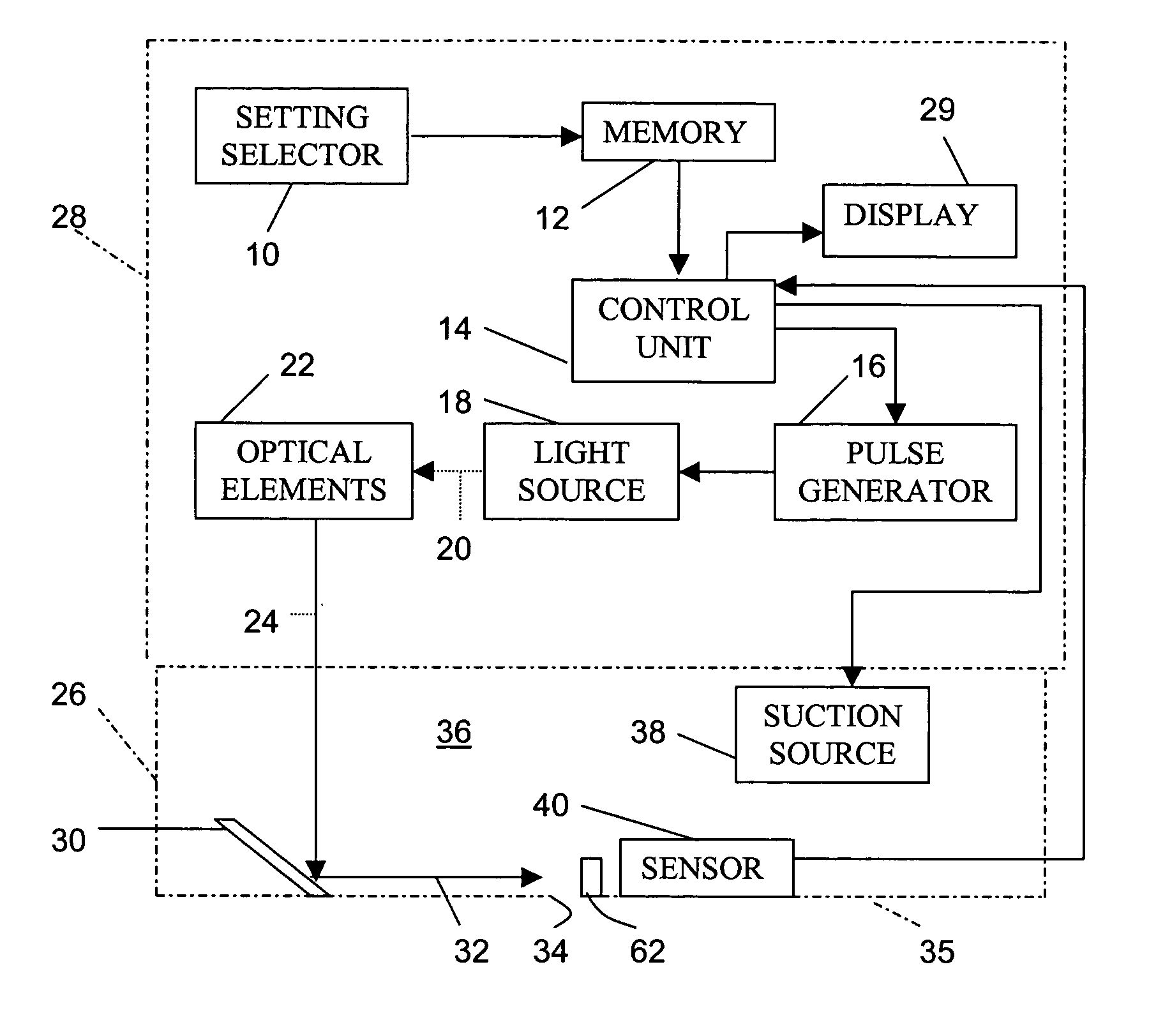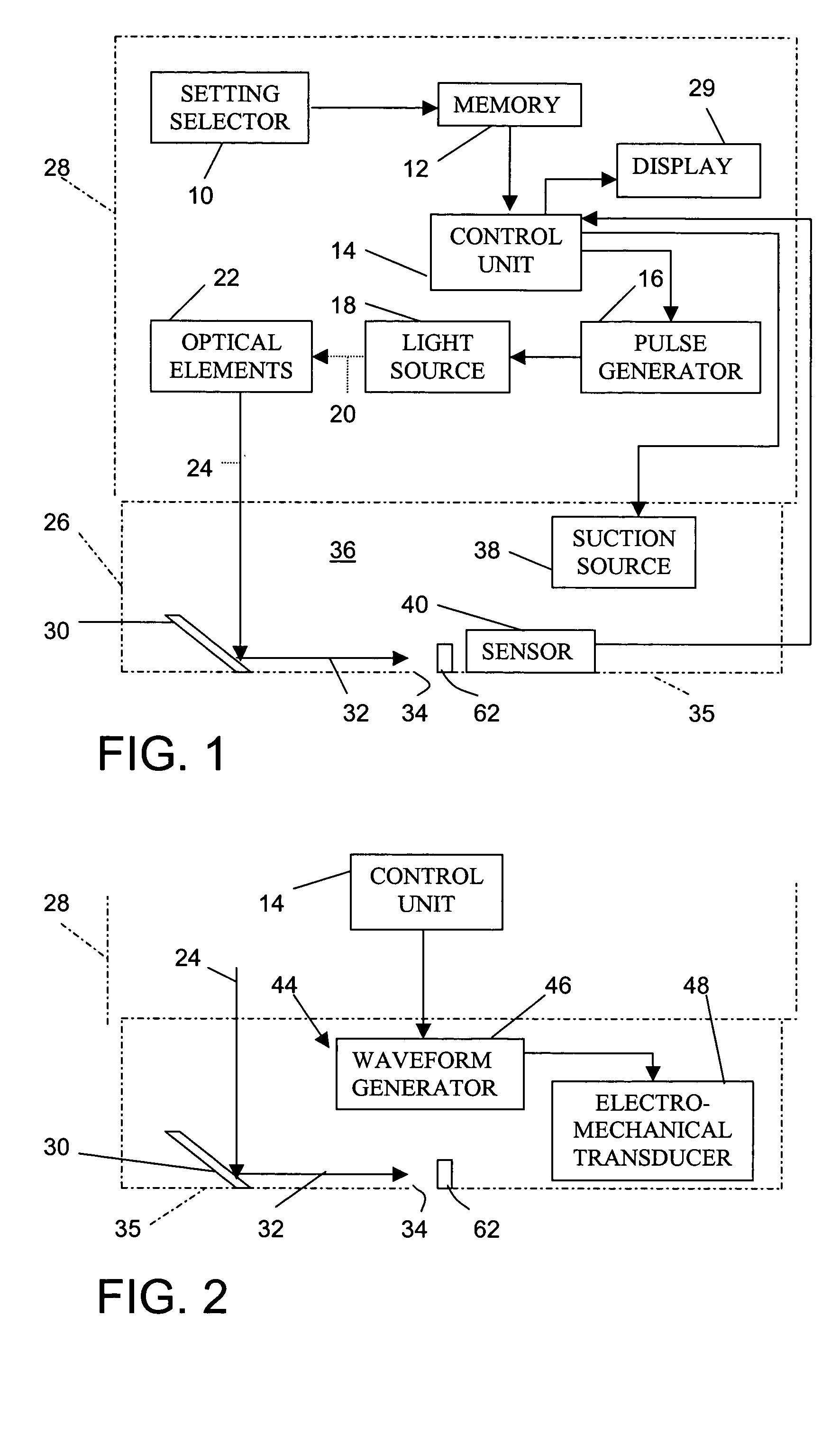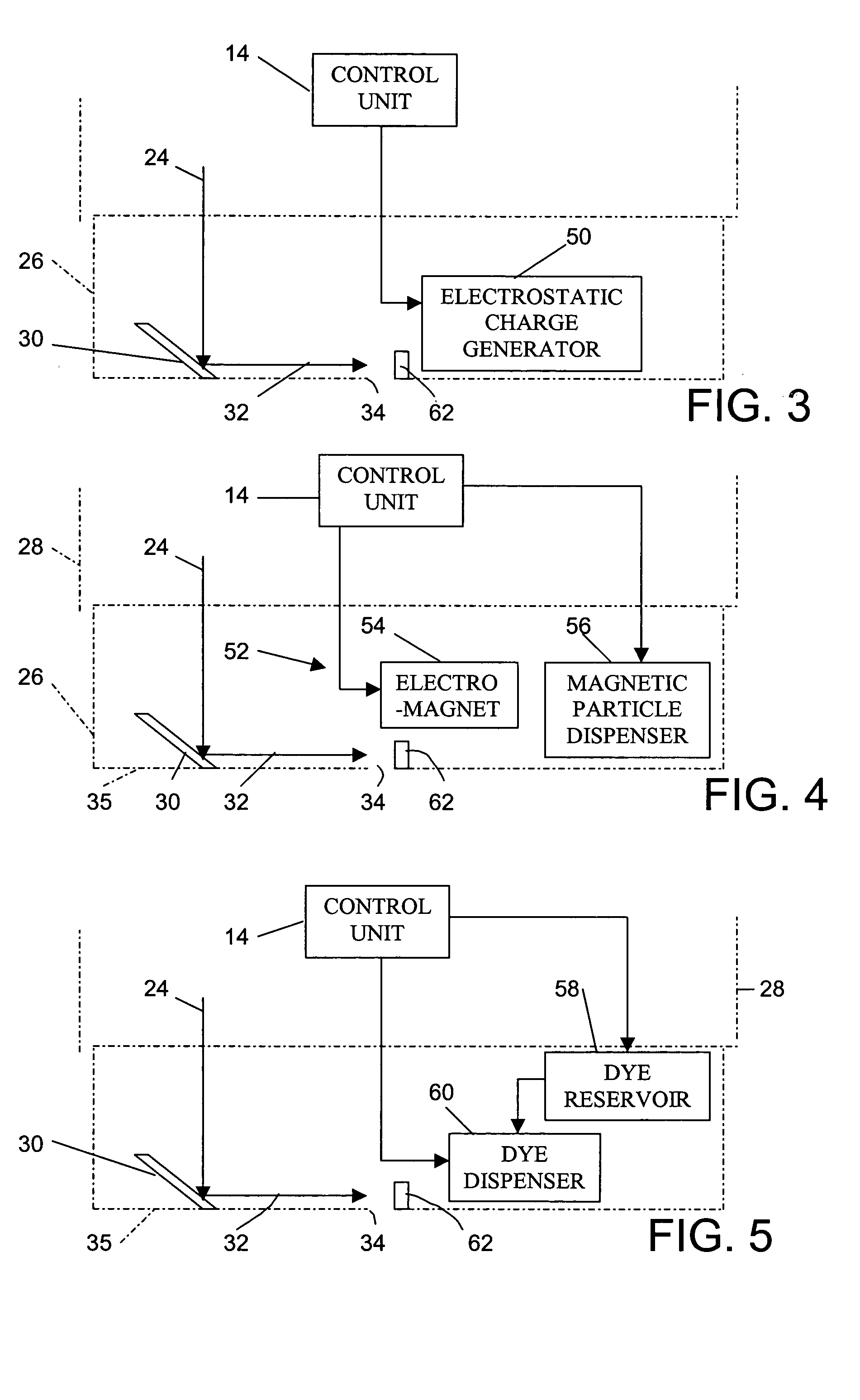Pulsed light treatment apparatus and associated method with preliminary light pulse generation
a technology of pulse generation and pulse treatment, which is applied in the field of pulsed light treatment apparatus, can solve the problems of inability to accurately visualize colors, method risk, and eye damage of users or operators, and achieve the effect of reducing the risk of retinal damag
- Summary
- Abstract
- Description
- Claims
- Application Information
AI Technical Summary
Benefits of technology
Problems solved by technology
Method used
Image
Examples
use example 8
HOME USE EXAMPLE 8
[0080] Another setting or combination of operational parameters for an incoherent light applicator device involves pulses with a pulse number of two, a pulse duration of 10 msec, an inter-pulse interval of 400 msec, a total pulse energy of 20 J / cm2, and a spectral distribution of a commercially available flashlamp, including wavelengths between 500 and 1200 nm.
[0081] The devices of FIGS. 1 and 2 may be provided with a low-pass filter, a band-pass filter, or a high-pass filter. A band-pass filter operates to limit the spectral distribution of the generated light pulses to wavelengths in a given band, for instance, between 700 nm and 900 nm. A low-pass filter may be used for transmitting to a skin surface only wavelengths less than a predetermined maximum, such as 900 nm, 750 nm, or 550 nm. The lower the wavelength the less likely the light will penetrate deeply and damage cellular and histological elements as deep as the bulb parts of the hair follicles. Shorter wa...
use example 1
PROFESSIONAL USE EXAMPLE 1
[0084] In a setting or combination of operational parameters suitable for professional use, an incoherent light applicator device for temporary hair removal generates pulses with a pulse number of two, a pulse duration of 7 msec, an inter-pulse interval of 150 msec, a total pulse energy of 60 J / cm2, and a spectral distribution of a commercially available flashlamp, including wavelengths between 500 and 1200 nm.
use example 2
PROFESSIONAL USE EXAMPLE 2
[0085] A slightly higher setting or combination of operational parameters for an incoherent light applicator device involves pulses with a pulse number of two, a pulse duration of 7 msec, an inter-pulse interval of 100 msec, a total pulse energy of 60 J / cm2, and a spectral distribution of a commercially available flashlamp, including wavelengths between 500 and 1200 nm.
PUM
 Login to View More
Login to View More Abstract
Description
Claims
Application Information
 Login to View More
Login to View More - R&D
- Intellectual Property
- Life Sciences
- Materials
- Tech Scout
- Unparalleled Data Quality
- Higher Quality Content
- 60% Fewer Hallucinations
Browse by: Latest US Patents, China's latest patents, Technical Efficacy Thesaurus, Application Domain, Technology Topic, Popular Technical Reports.
© 2025 PatSnap. All rights reserved.Legal|Privacy policy|Modern Slavery Act Transparency Statement|Sitemap|About US| Contact US: help@patsnap.com



